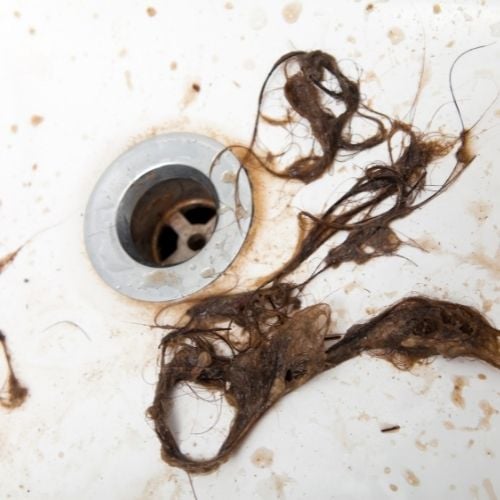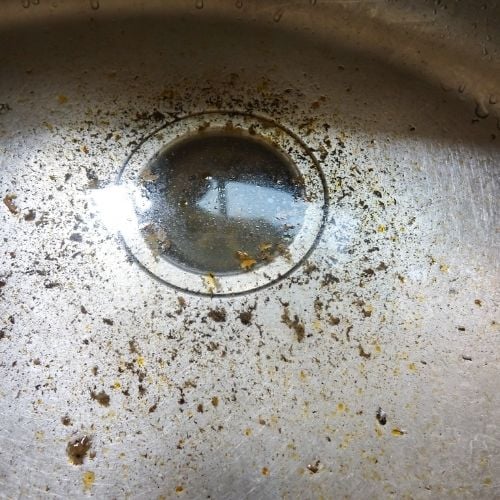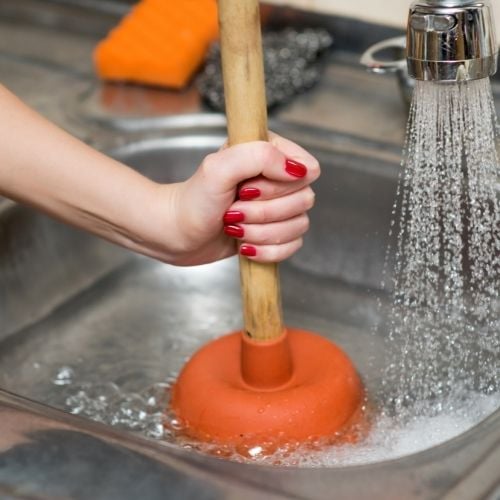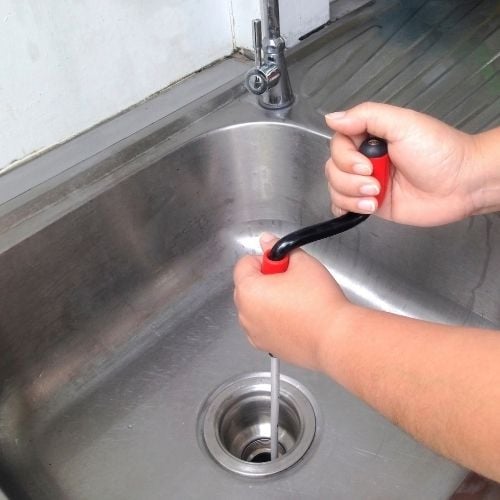It’s always frustrating when things don’t work the way they’re supposed to, and we’ve all been there. A printer that won’t print. A Bluetooth that won’t connect. A drain that won’t drain. When it’s something that you need to use every day — like a kitchen sink — it’s even worse. You might be inclined to call a plumber for a clogged drain right away.
However, sometimes a clogged drain is manageable all on its own. In this blog we’re going to explore the many varieties of a drain that won’t drain. We’ll teach you when to try a DIY fix, and when to call for help.
The usual suspects
When it comes to potential clogging, no drain is completely safe. However, there are those that have their more common issues. For instance, most of us have encountered a toilet that won’t flush.

Other things can go wrong in the bathroom as well. Hair is a common cause of drain clogs, whether from pets or family members. It collects in the drains of showers, bathtubs, and bathroom sinks. It can also end up in laundry drains. It may not seem like enough to block an entire drain. But when it combines with things like soap it can build up into a sticky mess.
Kitchen sinks are also a likely suspect. Not all homeowners are familiar with what can and can’t go down the drain. They may incorrectly assume that grease or fat can be rinsed away. These substances will solidify inside the pipes causing a clog.

Other food waste can be the cause of a blocked drain, too. Even with a garbage disposal, the gradual buildup of waste can be too much.
Serious red flags
In some cases, you can skip the DIY approach and call the plumber right away. If more than one drain is clogged, for example, you can assume that this is a job for a pro. Similarly, if you’re noticing the foul smell of sewage in your house, this might be bigger than a plunger fix.
DIY solutions for a clogged drain
A clogged drain is annoying and occasionally smelly. But before you call up the plumber quite yet, consider trying a DIY approach! There are several simple methods that might be able to handle a minor plumbing conundrum.
Go for the plunger The chances are that you’ve seen plenty of plungers in your life. They’re often hiding behind a toilet, on call for a minor plumbing disaster. These tools should not be underestimated. In many cases, a plunger is just what you need to resolve a minor clogged drain. Tackle the problem immediately, and your chances of fixing it with the plunger will be higher.

One thing you may not know about a plunger is that they’re not just reserved for toilets. They can do the trick on drain clogs in kitchen or bathroom sinks, as well. Of course, you probably don’t want to use the toilet plunger in the kitchen sink. Instead, consider keeping two of them around.
Get a drain snake While you’re at the hardware store getting an extra plunger, you might also see a drain snake in the same aisle. This is another plumbing tool that may be able to save the day when a plunger doesn’t cut it.
Also referred to as a plumber’s snake or a toilet jack, a drain snake is a long rope made of metal. It’s attached to a device that rotates the rope once it is inserted inside of the drain. This method can be effective at unclogging drains, especially when caused by a buildup of debris.

Simple DIY cleaner Drain clogged, but not in the mood to go to the store? You probably have what you need to make your own cleaner in your kitchen pantry. All it takes is a mixture of baking soda and white vinegar. When the two are combined, it creates a foamy chemical reaction that works as a strong cleaner. It’s strong enough to break apart gunk and dirt, and quite possibly whatever is clogging your drain.
To use on a clog, start by pouring the baking soda in the drain. Follow that with an equal amount of white vinegar. Give it a moment to sit, and then try rinsing with some hot water.
Try a store-bought product If you’ve tried the homemade cleaner, the plunger, and the snake, there’s one more hope before calling a plumber. You can find several different commercial products designed to clear a clogged drain. These are common solutions for simple clogs and can be effective.
There are a few downsides, though. Depending on the severity and cause of the clog, they might only provide a temporary solution. Also, these cleaners are typically made with strong, toxic chemicals. They need to be used very carefully and as instructed.
Boil some water Some people recommend pouring boiling water into a clogged drain. On rare occasions, this can help dislodge a clog. But, in most cases we don’t recommend this method without first asking your plumber. The hot water may damage the pipes and make your problems worse.
When it’s time to call the plumber
You should always address a clogged drain as soon as possible. The above DIY solutions can work wonders when the clog is relatively new or small. But, if you wait too long, or continue to see a clog in the same drain, they may stop working.
That’s when it’s time to call the plumber. A reliable local plumber — such as Geiler in the Cincinnati area — can be trusted to tackle a clogged drain with efficient expertise.
Remember, when multiple drains are clogged you should call a professional immediately. When you notice one clog, check to see that the rest of the drains in your home are working correctly. Look at toilets, sinks, and the dishwasher.
The occasional clogged drain is just a part of living. Now that you know how to manage a small clog on your own, you can help keep your home’s plumbing healthy, and prioritize getting professional help when it’s necessary.


